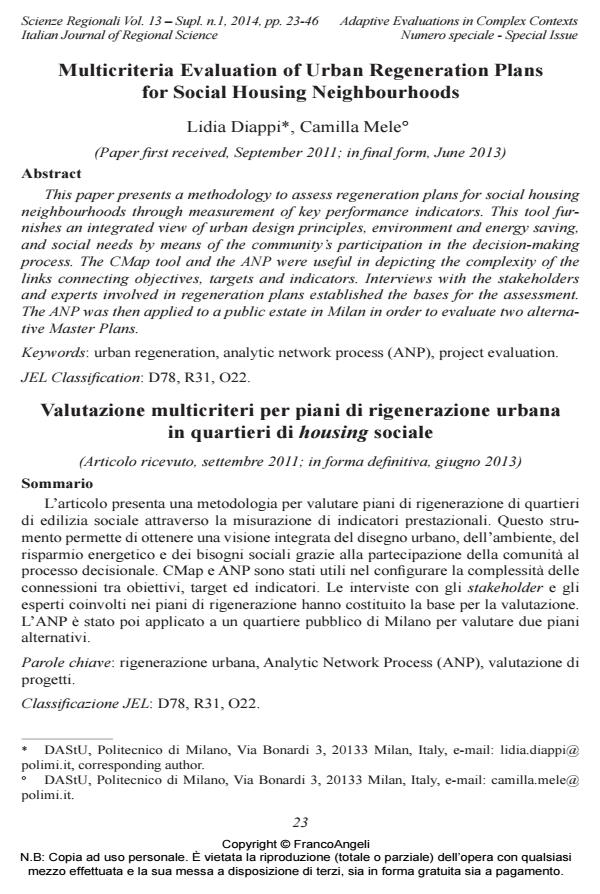Multicriteria Evaluation of Urban Regeneration Plans for Social Housing Neighbourhoods
Titolo Rivista SCIENZE REGIONALI
Autori/Curatori Lidia Diappi, Camilla Mele
Anno di pubblicazione 2014 Fascicolo 2014/1 Suppl.
Lingua Inglese Numero pagine 23 P. 23-45 Dimensione file 5267 KB
DOI 10.3280/SCRE2014-S01002
Il DOI è il codice a barre della proprietà intellettuale: per saperne di più
clicca qui
Qui sotto puoi vedere in anteprima la prima pagina di questo articolo.
Se questo articolo ti interessa, lo puoi acquistare (e scaricare in formato pdf) seguendo le facili indicazioni per acquistare il download credit. Acquista Download Credits per scaricare questo Articolo in formato PDF

FrancoAngeli è membro della Publishers International Linking Association, Inc (PILA)associazione indipendente e non profit per facilitare (attraverso i servizi tecnologici implementati da CrossRef.org) l’accesso degli studiosi ai contenuti digitali nelle pubblicazioni professionali e scientifiche
This paper presents a methodology to assess regeneration plans for social housing neighbourhoods through measurement of key performance indicators. This tool furnishes an integrated view of urban design principles, environment and energy saving, and social needs by means of the community’s participation in the decision-making process. The CMap tool and the ANP were useful in depicting the complexity of the links connecting objectives, targets and indicators. Interviews with the stakeholders and experts involved in regeneration plans established the bases for the assessment. The ANP was then applied to a public estate in Milan in order to evaluate two alternative Master Plans.
L’articolo presenta una metodologia per valutare piani di rigenerazione di quartieri di edilizia sociale attraverso la misurazione di indicatori prestazionali. Questo strumento permette di ottenere una visione integrata del disegno urbano, dell’ambiente, del risparmio energetico e dei bisogni sociali grazie alla partecipazione della comunità al processo decisionale. CMap e ANP sono stati utili nel configurare la complessità delle connessioni tra obiettivi, target ed indicatori. Le interviste con gli stakeholder e gli esperti coinvolti nei piani di rigenerazione hanno costituito la base per la valutazione. L’ANP è stato poi applicato a un quartiere pubblico di Milano per valutare due piani alternativi.
Parole chiave:Rigenerazione urbana, Analytic Network Process (ANP), valutazione di progetti.
Jel codes:D78, R31, O22
- Rigenerazione urbana e sociale: il progetto "La Mia Crocetta" Camilla Mele, in TERRITORIO 70/2014 pp.29
DOI: 10.3280/TR2017-070004 - Approaching Regeneration of the Built Environment Camilla Mele, pp.13 (ISBN:978-3-031-76893-4)
Lidia Diappi, Camilla Mele, Multicriteria Evaluation of Urban Regeneration Plans for Social Housing Neighbourhoods in "SCIENZE REGIONALI " 1 Suppl./2014, pp 23-45, DOI: 10.3280/SCRE2014-S01002